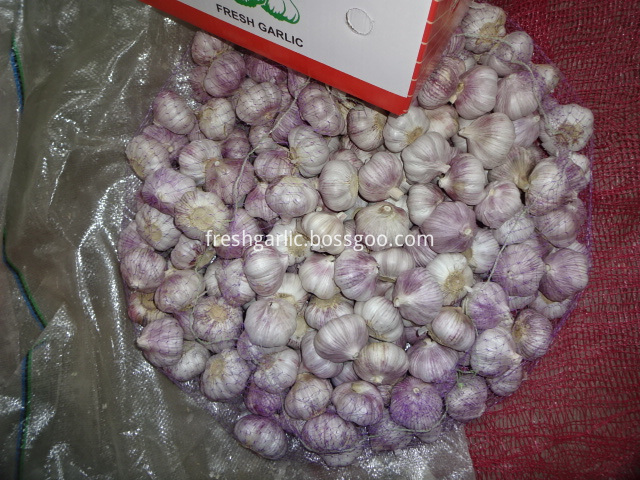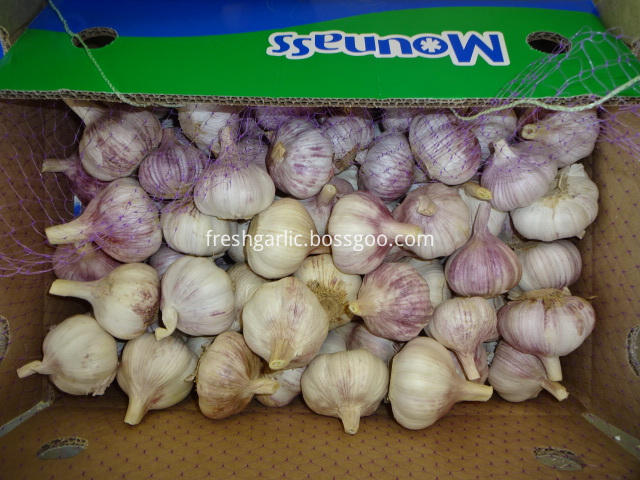There are many indicators to be considered in the biodiesel standard. Some indicators are common to petroleum diesel, including density , kinematic viscosity , flash point , sulfur content , 10% residual carbon residue , cetane number , ash, water content , mechanical impurities. Copper corrosion , fuel stability, low temperature performance, etc.; some indicators are specific to biodiesel, including total ester content, free glycerin content, monoglyceride, diester and triester content, methanol content, iodine value and Polyunsaturated fatty acid methyl ester content, acid value, phosphorus content, alkali and alkaline earth metal content; in addition, there are some additional indicators including distillation range , combustion calorific value, lubricity, saponification content, etc., are optional .
Flash point : For the safety of storage and transportation, the fuel has the minimum flash point requirement. The flash point of biodiesel is generally higher than 110 ° C, far exceeding the 70 ° C of petroleum diesel, so biodiesel storage and transportation is safer than petroleum diesel. The content of methanol is an important factor affecting the flash point of biodiesel. Even if the biodiesel contains a small amount of methanol, its flash point will decrease. In addition, more methanol will also affect fuel pumps, rubber and plastic parts, and will reduce the combustion performance of biodiesel. The US biodiesel standard requires a closed flash point of not less than 130 ° C and a European standard requirement of not less than 120 ° C.
Moisture : Free water can cause biodiesel to oxidize and form an acidic aqueous solution with free fatty acids, which itself corrodes the metal. The US biodiesel standard requires biodiesel moisture and sediment not to exceed 0.05%, and European standards require water content not to exceed 500 mg/kg.
Mechanical Impurity : Refers to all impurities present in the oil that are insoluble in the specified solvent. Mechanical impurities have a serious impact on the wear and operation of engine components. No mechanical impurities are allowed in biodiesel. The European biodiesel standard requires a total impurity content of no more than 24 mg/kg.
Kinematic viscosity : Kinematic viscosity is a measure of the internal friction of biodiesel flowing under the action of gravity. It is the ratio of the dynamic viscosity to the density of biodiesel at the same temperature. For some engines, in order to prevent power loss caused by jet pump and injector leakage, a viscosity minimum can be set; on the other hand, the allowable viscosity is defined by consideration of the design dimensions of the engine and the characteristics of the fuel injection system. Maximum value. The viscosity of biodiesel is higher than that of petroleum diesel. After adding 2-20% biodiesel to petroleum diesel, the viscosity of diesel will increase, but it can also meet the standard requirements for diesel kinematic viscosity. The US standard requires biodiesel to have a kinematic viscosity of 1.9 to 6.0 mm 2 /s at 40 ° C and a European standard of 40 ° C kinematic viscosity of 3.5 to 5.0 mm 2 / s.
Sulfate Ash : In biodiesel, ash is present in three forms: solid abrasives, soluble metal soaps, and unremoved catalysts. Solid abrasives and unremoved catalysts can cause wear on the injectors, fuel pumps, pistons and piston rings as well as engine deposits. Soluble metal soaps have little effect on wear, but can cause filter plugging and engine deposits. Both US and European standards require biodiesel sulfate ash not to exceed 0.02%.
Sulfur : Sulfur content has a major impact on engine wear and deposition and emissions of exhaust pollutants. An important indicator of clean fuels is low sulfur requirements. A major advantage of biodiesel is the low sulfur content. US standards require biodiesel sulfur content not to exceed 0.05%, and European standards to require less than 0.001%.
Copper sheet corrosion : The tendency of the oil to corrode copper is tested under specified conditions. This test can be used to evaluate the possibility of corrosion of copper, brass, and bronze parts in fuel systems due to the presence of acid or sulfur-containing compounds that can discolor copper sheets. According to current standards, copper corrosion of biodiesel can generally meet the requirements, but long-term contact with copper may lead to degradation of biodiesel, resulting in free fatty acids and solid matter. The US standard requires biodiesel copper to be corroded no higher than grade 3 and European standard to grade 1.
Cetane number : refers to the volume percentage of n-hexadecane in a standard fuel having the same ignition lag period as the fuel to be measured in an engine test under specified conditions. The cetane number can be used to evaluate the ignition performance, white smoke effect, and combustion intensity of the fuel oil. Cetane number specifications depend on the engine's design dimensions, speed, load change characteristics, and initial and atmospheric conditions. One advantage of biodiesel compared to petroleum diesel is the higher cetane number. The US standard requires biodiesel to have a cetane number of not less than 47 and the European standard to exceed 51.
Oxidation stability : Oxidation stability is also an important indicator of biodiesel quality. Biodiesel with poor oxidation stability tends to produce aging products: insoluble polymers (colloids and sludge), which can cause engine filter clogging and jet pump coking. And cause increased exhaust and difficulty in starting; soluble polymer, which can form resinous substances in the engine, which may cause flameout and start-up difficulties; aging acid, which causes corrosion of engine metal parts; peroxide, which causes rubber The aging of the components becomes brittle and causes fuel leakage and the like. Since biodiesel is difficult to pass through a cellulose filter, the method for evaluating the oxidation stability of diesel cannot evaluate biodiesel. A number of methods have been developed to assess the oxidation stability of biodiesel, and the accepted standard methods have been compared to ISO 6886 - Animal and Vegetable Oil Oxidation Stability Test (Accelerated Oxidation Process) and EN 14112:2004 based on this - Fatty Acids Methyl ester oxidation stability test (accelerated oxidation method). The European standard stipulates that the induction period of biodiesel at 110 ° C is not less than 6 hours, and the US standard has not specified this indicator.
Low-temperature fluidity : The flow performance of diesel fuel under low temperature conditions is not only related to the normal supply of diesel engine fuel supply system at low temperature, but also closely related to whether diesel fuel storage, transportation, loading and unloading operations can be carried out at low temperatures. . The low temperature flow performance of diesel is generally measured by cloud point, cold filter point , pour point/pour point. Before the cold filter point method occurs, the cloud point, the pour point /pour point are generally used to evaluate the low temperature performance of the oil. The United States uses the cloud point and pour point indicators to classify diesel grades. The cold filter point has a good correspondence with the actual use temperature of the fuel, and has practical guiding significance for the use of diesel fuel, while the cloud point, the pour point/pour point are deviated from the actual situation. The low temperature fluidity of 100% biodiesel is generally poor, and the cold filter point is higher than petroleum diesel. After blending petroleum diesel with biodiesel, the low-temperature fluidity has a lot to do with the nature of petroleum diesel, the nature of biodiesel, the amount of incorporation, and whether or not a fluidity improver is used. Neither the US nor European standards are clearly defined. Carbon residue: The amount of carbon residue used to evaluate the tendency of carbon deposition in fuel oil. The greater the residual carbon value, the greater the tendency to generate carbon deposits in the diesel engine cylinders, but this performance index is considered a poor estimate due to the lack of direct correlation with the engine. The US biodiesel standard replaces 10% of the steam residue with 100% of the sample and is calculated according to 10% steaming, and its value is less than 0.050%. The European biodiesel standard is a direct test that requires 100% steam residue to be no more than 0.3%.
Acid value : refers to the number of milligrams of potassium hydroxide required to neutralize the acidic substance in 1 gram of oil. The acid value of biodiesel is determined by the residual free fatty acids in the production process and the fatty acids produced during the storage process. High acid value biodiesel can exacerbate the deposition of fuel oil systems and increase the possibility of corrosion. At the same time, the wear of the plunger of the fuel injection pump will be intensified, and the fuel in the injector head and the combustion chamber will increase, resulting in deterioration of the spray and Reduced diesel engine power and increased wear on the cylinder piston assembly. The US biodiesel standard acid value is not more than 0.80 mg KOH / g, the European standard is not more than 0.50 mg KOH / g.
Free Glycerol : High levels of free glycerin can cause ejector deposits, as well as blockage of fueling systems and corrosive engines and black smoke, as well as the formation of free glycerol at the bottom of storage and fueling systems. Both US and European biodiesel standards require free glycerol levels not exceeding 0.02%.
Total glycerol, monoglyceride, diester and triester: The total glycerol method is used to evaluate the glycerol content of the oil, including free glycerol and unreacted or partially reacted fats. A lower total glycerol content ensures a high conversion of the fat to the fatty acid methyl ester. Monoglycerides and diesters are by-products of unconverted complete conversion of triglycerides, if their concentration is too high, may cause deposition of the injector and affect low temperature handling properties, causing filter clogging. The US standard only stipulates that the total glycerin content does not exceed 0.240%, and the content of monoglycerides, diesters and triesters is not specified; the European standard stipulates that the monoglyceride, diester and triester contents are not more than 0.80%, 0.20% and 0.20%, the total glycerin content does not exceed 0.25%.
Phosphorus content : Phosphorus can destroy catalytic converters used in emission control systems, and must maintain its low content. In foreign countries, with the strict benefits of emission standards, the application of catalytic converters on diesel power equipment is becoming more and more common, so the importance of low phosphorus content will gradually increase. Both US and European biodiesel standards require a phosphorus content of no more than 10 mg/kg. 90% recovery temperature: Since the bio-diesel-derived animal and vegetable oils are mainly composed of fatty acid glycerides of 16 to 18 carbons, the biodiesel produced has a distillation range of generally 330 ° C to 360 ° C. The role of this indicator is to prevent the incorporation of other high-boiling pollutants into biodiesel. The US standard stipulates that the 90% recovery temperature does not exceed 360 ° C, and the European standard does not stipulate this item.
Metal content : Residual metal can cause engine deposits and wear, and cause pump and syringe failure, which increases diesel exhaust and makes starting difficult. Catalysts for transesterification can introduce metals such as Na, K, Ca, Mg into biodiesel. European standards require that the content of monovalent metals and divalent metals not exceed 5 mg/kg, which is not required by the US standard.
White garlic,also called Normal White Garlic or purple white garlic,is the most common garlic variety of Shandong,China. The skin ofnormal white garlic is basically white but White garlic also has a few purple stripes on it.
Normal white garlic, new crop
1. Commodity name: Normal White Garlic (Regular white garlic or Single Clove Garlic)
2. Feature: strongly spicy, milk white flesh, naturally bright color, no burnt, no mouldy, no broken, no dirt skins, no mechanical damaged, 1-1.5cm stem length, roots cleaness.
3. Size: 4.5-5.0cm, 5.0-5.5cm, 5.5-6.0cm, 6.0-6.5cm, 6.5cm & up.
4. Packing:
1) Loose packing(inner string bag):
a) 5kgs/carton, b) 10kgs/carton, c) 20kgs/carton; d) 5kgs/mesh bag, e) 10kgs/mesh bag, f) 20kgs/mesh bag
2) Prepacking:
a) 1kg*10bags/carton b) 500g*20bags/carton c) 250g*40bags/carton
d) 1kg*10bags/mesh bag e) 500g*20bags/mesh bag f) 250g*40bags/mesh bag
g) prepacked by 1pc/bag, 2pcs/bag, 3pcs/bag, 4pcs/bag, 5pcs/bag, 6pcs/bag, 7pcs/bag, 8pcs/bag, 9pcs/bag, 10pcs/ba, 12pcs/bag, then packed with 5 or 10kgs carton, 5 or 10kgs mesh bag outside h) packed according to clients' requirements.
5. Supply period: all the year round
a) Fresh Garlic: early June to end August
b) Cold storaged garlic: early September to the next middle May
6. Conveyance:
a) Cartons: 24-27.5MT/40' HR (If palletized: 24Mt/40' HR)
b) Bags: 26-30Mt/40' HR
7. Transporting and storing temperature: -3°C--+2°C
8. Shelf life: stored for up to 12 months in proper conditions




JINING FORICH FRUITS & VEGETABLES CO., LTD. , https://www.forichgarlic.com